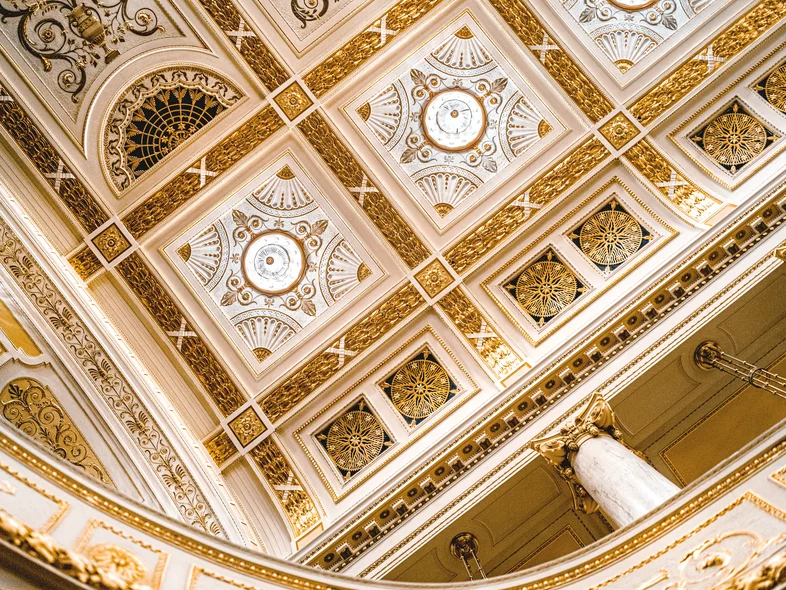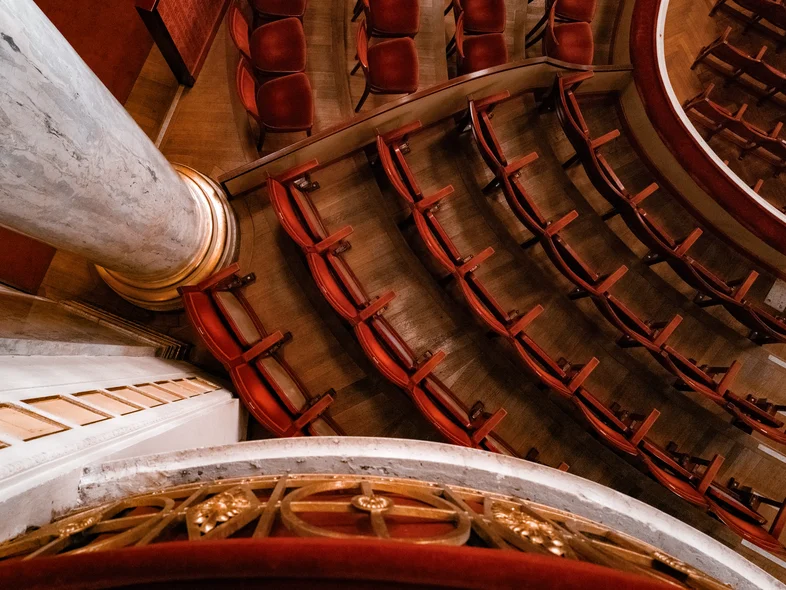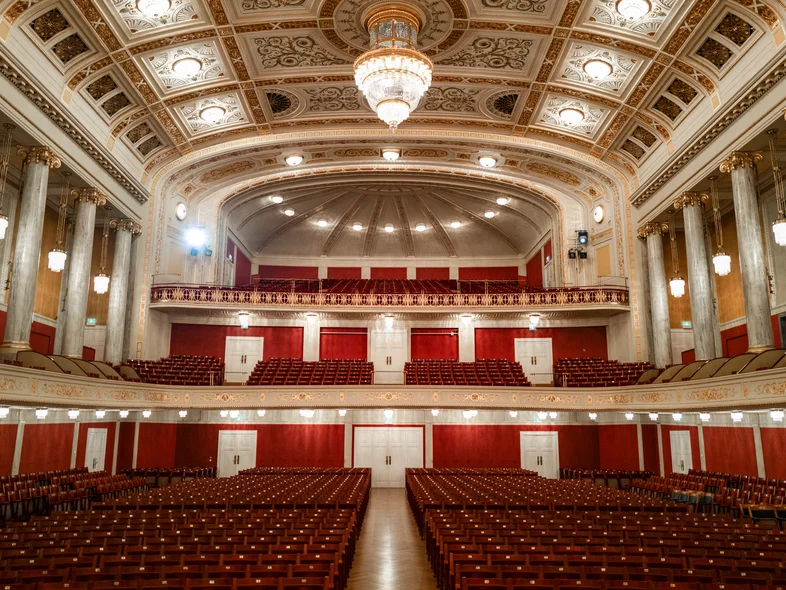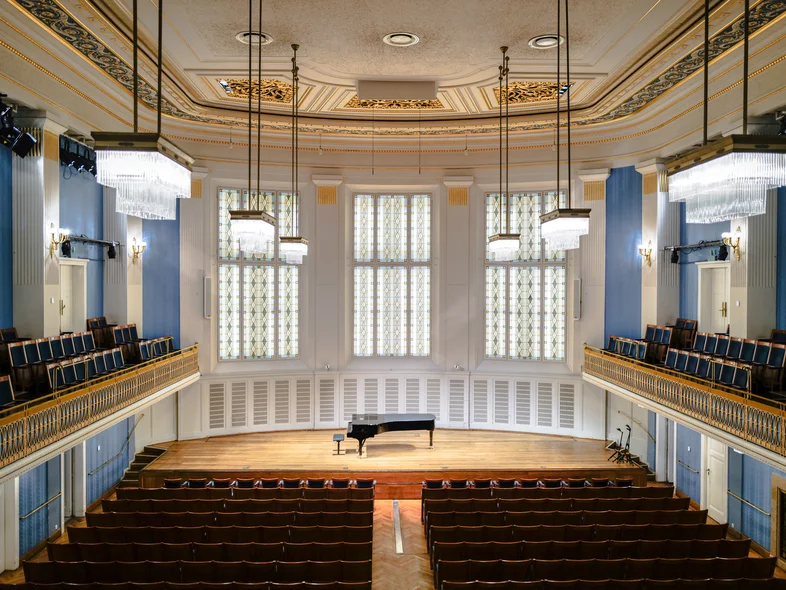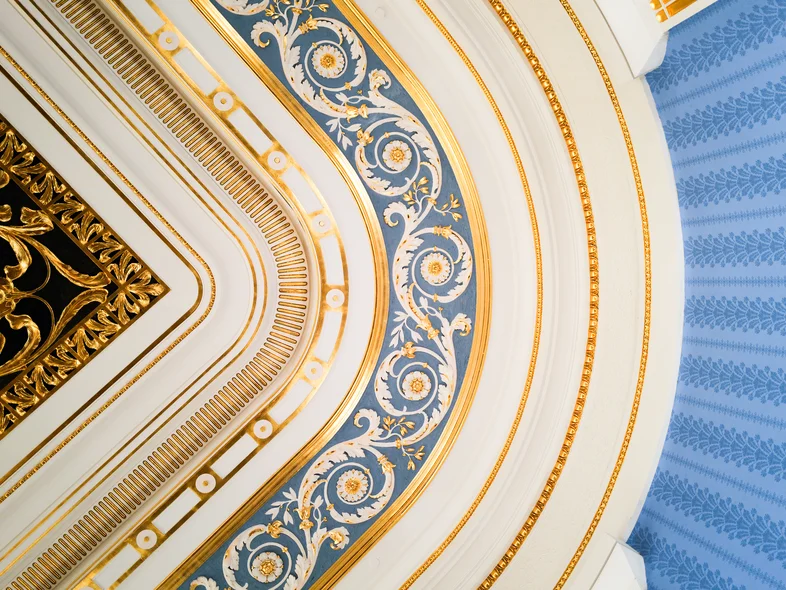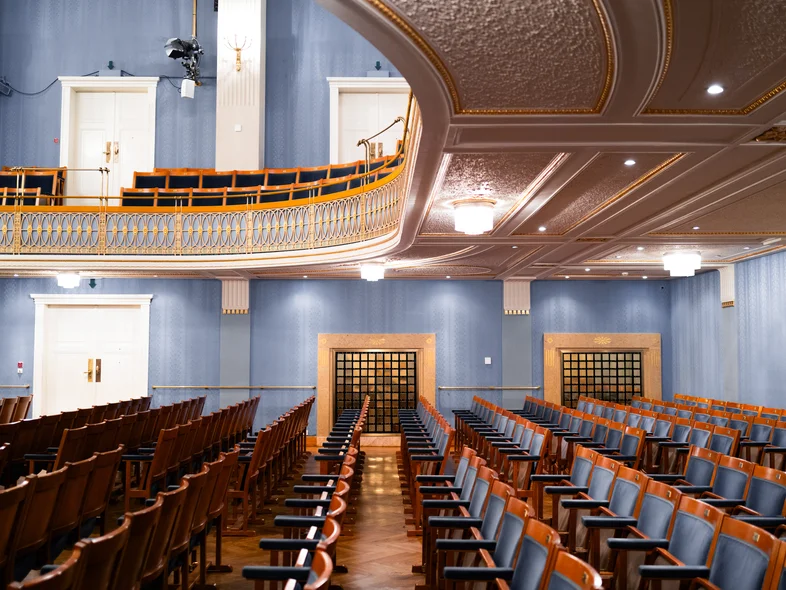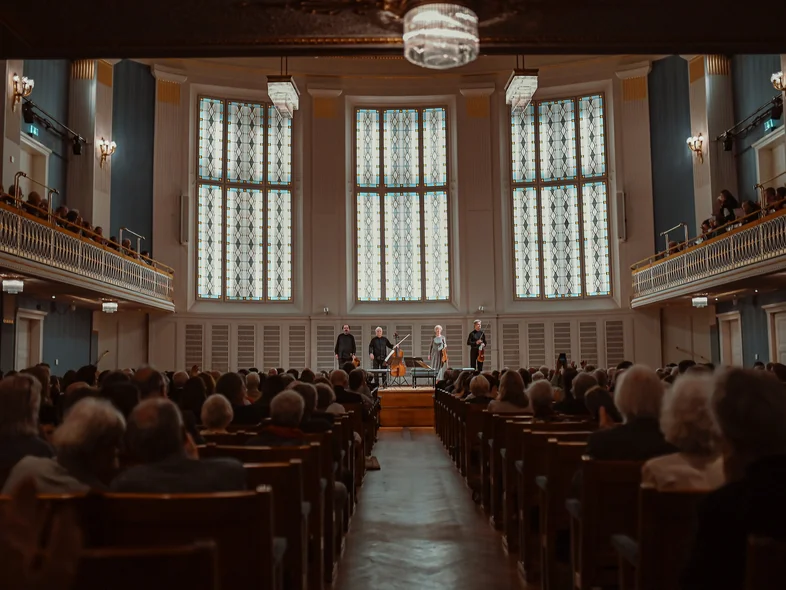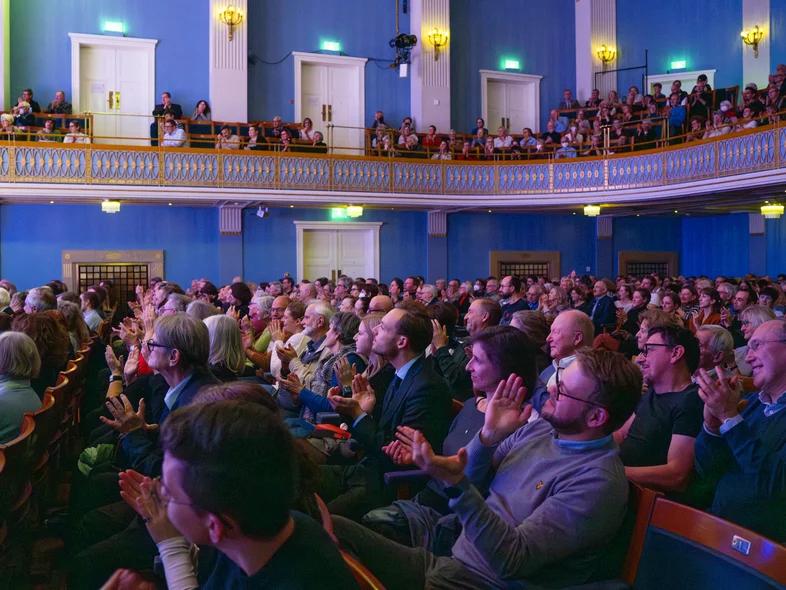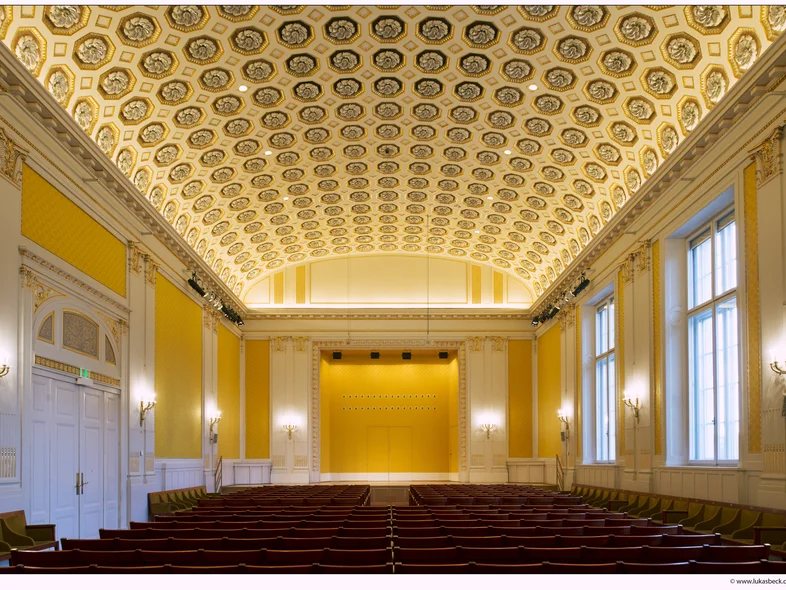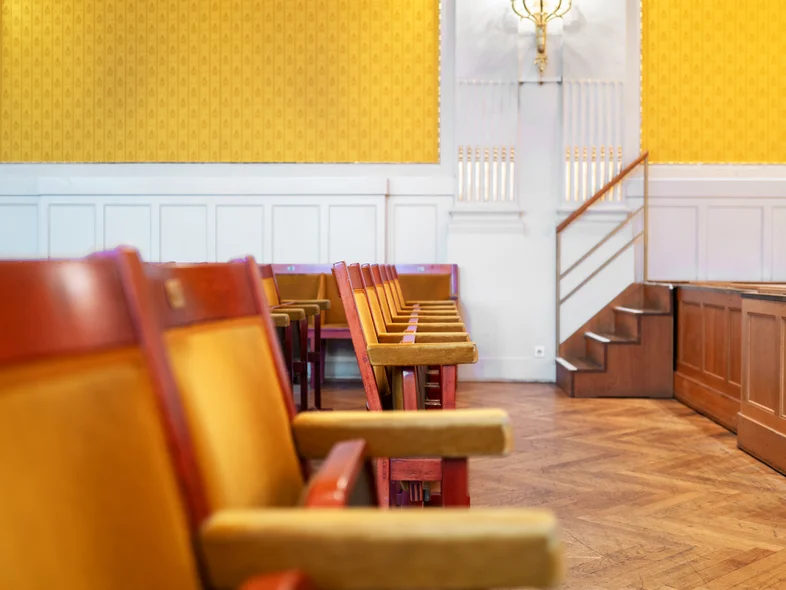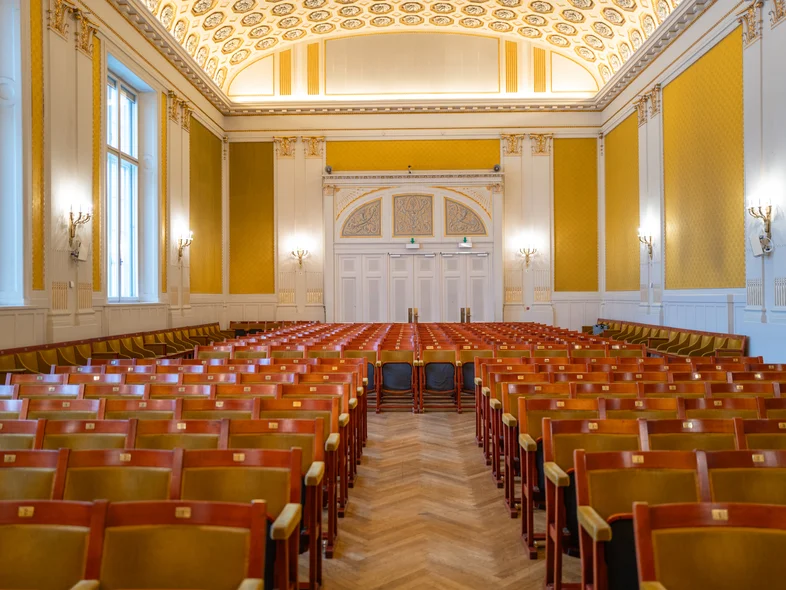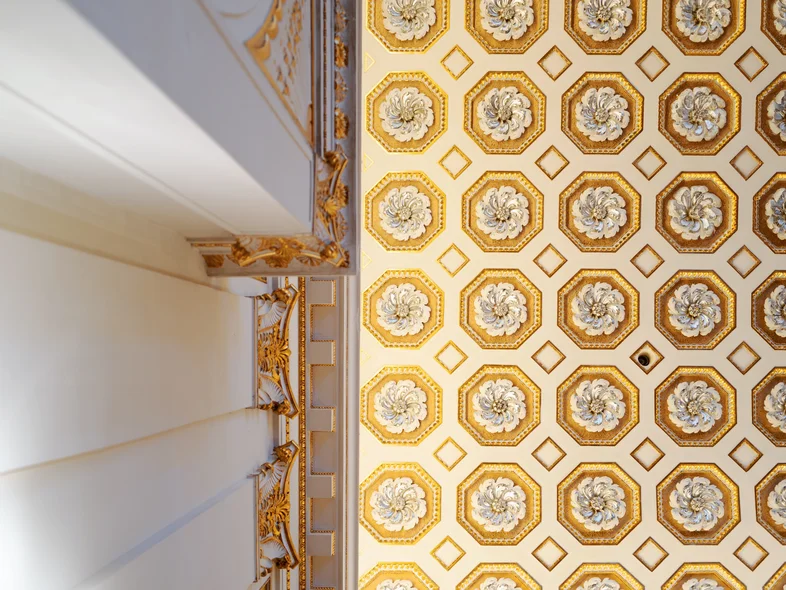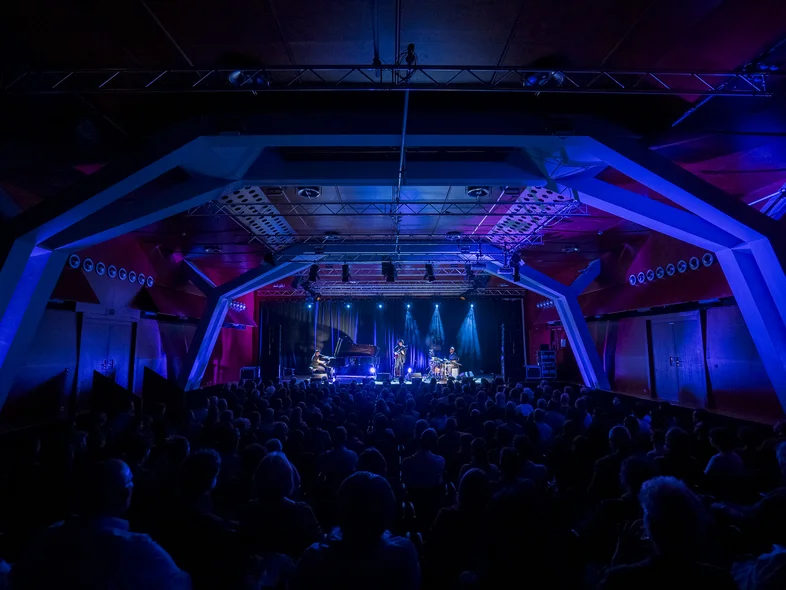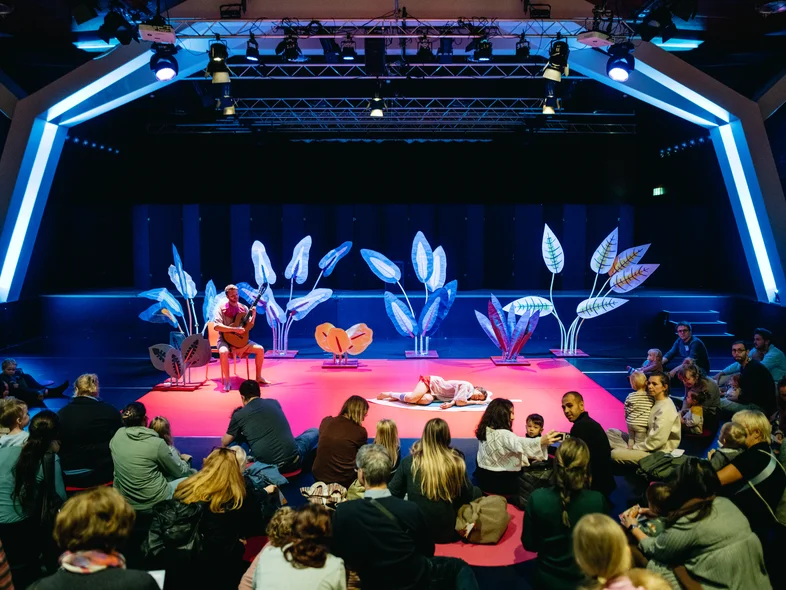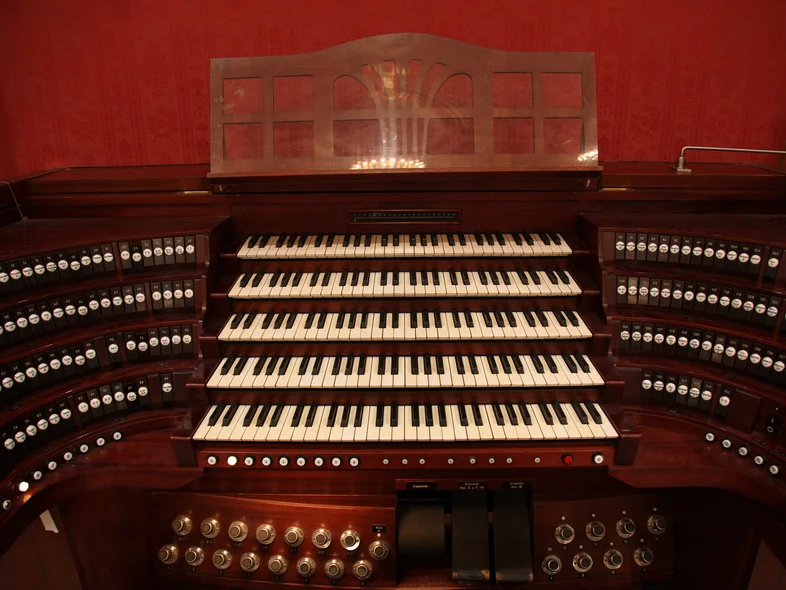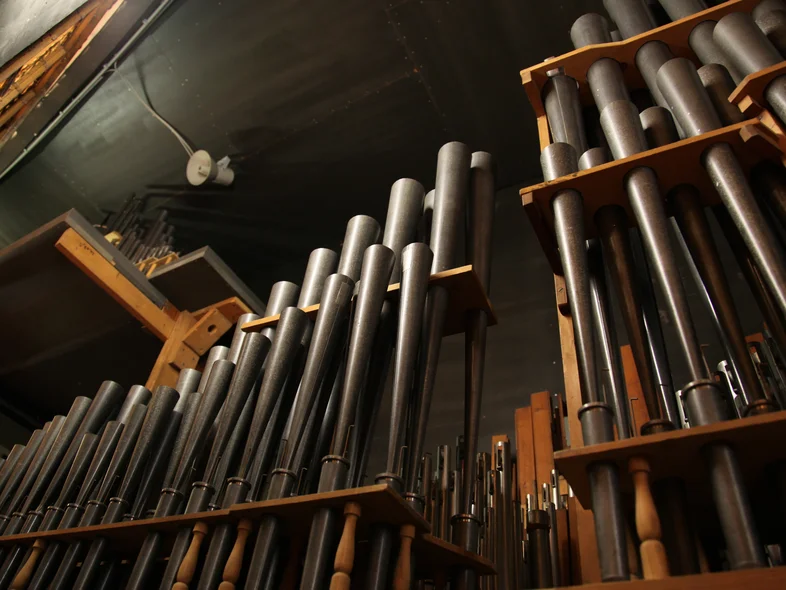Virtual Tour
Insights into the building: from the »Großer Saal« to the »Berio Saal«
Großer Saal
The »Große Saal«, the flagship of the concert hall, lies at the heart of the building, which has over 600 rooms. Its architecture epitomises a generous sense of space and classical balance. The unforgettable moments that only music can create have always taken place on its stage. Artists, audience and space merge into a perfect triad here.
World-famous orchestras, virtuoso soloists, great conductors and legendary jazz musicians: The Grosser Konzerthaussaal, which can accommodate over 1,800 visitors, is an ideal venue for a wide variety of musical worlds. Since its extensive general refurbishment in 1999, it has been restored to its former glory: technology and comfort have been modernised, but the elegant elegance of the room has been retained. Its unique atmosphere brings together the wide-ranging artistic spectrum of the Wiener Konzerthaus.
Data Großer Saal
Seating capacity: 1,865
Ground floor: 1,116
Balcony and boxes: 361
Gallery: 388
Auditorium: 750 m²
Podium: 170 m²
Mozart-Saal
Open and informal, friendly and intimate: an unrivalled aura makes the »Mozart-Saal« a jewel of international musical life. Ideal for all types of chamber music, from lute recitals to lieder recitals, from string quartets to chamber orchestras, it offers space for around 700 visitors - just right to create the atmosphere necessary for concentrated musical experiences.
The »Mozart-Saal« enjoys a worldwide reputation for its unique acoustics. This distinction makes it a declared favourite of leading ensembles and soloists - and a sought-after location for sound recordings. In the course of the general refurbishment, it was possible to respond to this need: Like all other halls in the Konzerthaus, the »Mozart-Saal« is directly connected to a recording studio and a control room.
Data Mozart-Saal
Seating capacity: 704
Ground floor: 456
Balcony: 248
Auditorium: 330 m²
Podium standard: 65 m²
Podium max.: 105 m²
Schubert-Saal
A festive room, the ideal image of a musical salon: the reopening of the window front in the course of the general refurbishment has restored the »Schubert-Saal«s elegant, light flair.
With around 320 seats, it is just as suitable for chamber music events of all colours as it is for receptions, dinners and inspiring lectures. The popular lunchtime concerts are equally at home here as events that give promising young musicians their first steps on a professional concert stage. Many a musician's career has begun in the »Schubert-Saal« of the Wiener Konzerthaus.
Data Schubert-Saal
Seating capacity: 320
Auditorium: 240 m²
Podium: 50 m²
Berio-Saal dedicated by Kapsch
The Wiener Konzerthaus is the leading organiser of new music in Austria. More than 1,600 world premieres that have taken place here since 1945 demonstrate the intensity with which the Konzerthaus is dedicated to contemporary musical life.
A new concert hall was created in the foundations of the building to provide an even better forum for contemporary musical trends. With its flexible podium and electro-acoustic and lighting equipment, this new hall is ideally equipped to meet the challenges of today's musical life. But it is not only international contemporary music that has found a new home here: As a hall of almost unlimited possibilities, it is suitable for workshops and children's concerts, for recordings and rehearsals, for artistic experiments and social events of all kinds.
The New Hall was renamed the »Berio-Saal« dedicated by Kapsch at the beginning of the 2009/2010 season. The Wiener Konzerthaus would like to thank its general partner Kapsch for its long-standing support.
Luciano Berio (* 1925 in Liguria, † 2003 in Rome) was one of the central musical innovators of the 20th century. Berio played a decisive role in the development of new compositional techniques and electronic music. He also expanded instrumental playing techniques and the expressive spectrum of the singing voice in his works.
After the Second World War, many composers considered their musical heritage to be devoid of meaning and betrayed in the face of the propagandistic abuse of music by the fascist regimes. Before this tabula rasa, Berio developed an extraordinarily versatile compositional oeuvre. A particular characteristic of his composing was the need for a constructive »dialogue« with music history, which was always inherent in his striving for new forms and sounds; Berio never fell into an eclectic idiom. As a pioneering composer and passionate communicator of music, Luciano Berio had a lasting influence on subsequent generations.
Data Berio-Saal
Seating capacity: 400
Area: 340 m²
The large Rieger organ in the Wiener Konzerthaus
The organ in the »Großer Saal« of the Vienna Konzerthaus was built in 1913 by the renowned company Gebrüder Rieger, Jägerndorf (Silesia). After extensive preparatory work by the organ committee, an instrument was created that was unrivalled in terms of its size and stylistic orientation: it was the first five-manual organ in the Danube Monarchy and, with its 116 stops spread over five manuals and pedal, is still the largest concert organ in Europe today, as well as one of the most important monuments of sound between the end of Romanticism and the beginning of Historicism in organ building.
The musical and stylistic concept of the instrument is essentially orientated towards the so-called »Alsatian organ reform« and the ideas of its proponent Émile Rupp. The ideal he had in mind was »the fusion of the Bach-Silbermann mixture and aliquot organ with the old French type of extended reed choirs, enriched by orchestral character voices«. In addition, the Vienna Konzerthaus attempted to achieve the greatest possible versatility of the instrument using all the »undisputedly recognised achievements of the art of disposition and voicing« (W. E. Ehrenhofer).
The Konzerthaus organ was designed - another first for Vienna - without a visible façade, i.e. without a front facing the audience. From the second half of the 19th century onwards, the versatile possibilities offered by electropneumatic action enabled organ designers to depart from the classical organ structure and grant the architects extensive creative competences. Helmer and Fellner, together with Ludwig Baumann the builders of the Konzerthaus, designed a semi-circular apse for the end wall of the »Großer Saal«, which was divided by columns and behind which the organ was placed, invisible to the visitors. When the instrument was played for the first time on 19 October 1913, the day the final stone of the Konzerthaus building was laid (Richard Strauss had composed the »Festive Prelude« for organ and orchestra especially for this occasion), the audience and critics were delighted.
In 1982, the organ was thoroughly restored by the company Gebrüder Rieger in Schwarzach. Since then, it has been able to maintain its place in concert life: as a historically significant and at the same time - as numerous premières prove - undiminishedly topical sound monument. The thorough cleaning of all pipes and windchests as well as the installation of a new setter system in summer 2015 now allows the instrument to shine in old-new splendour.

